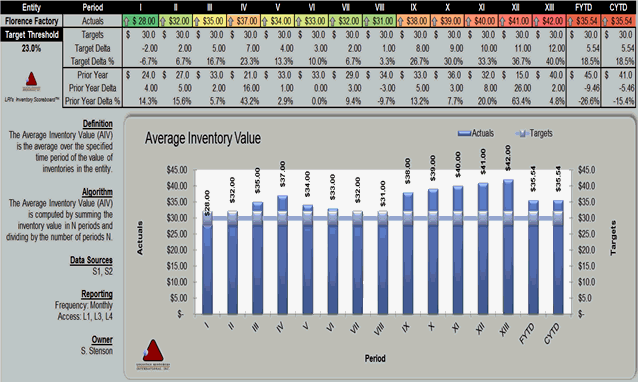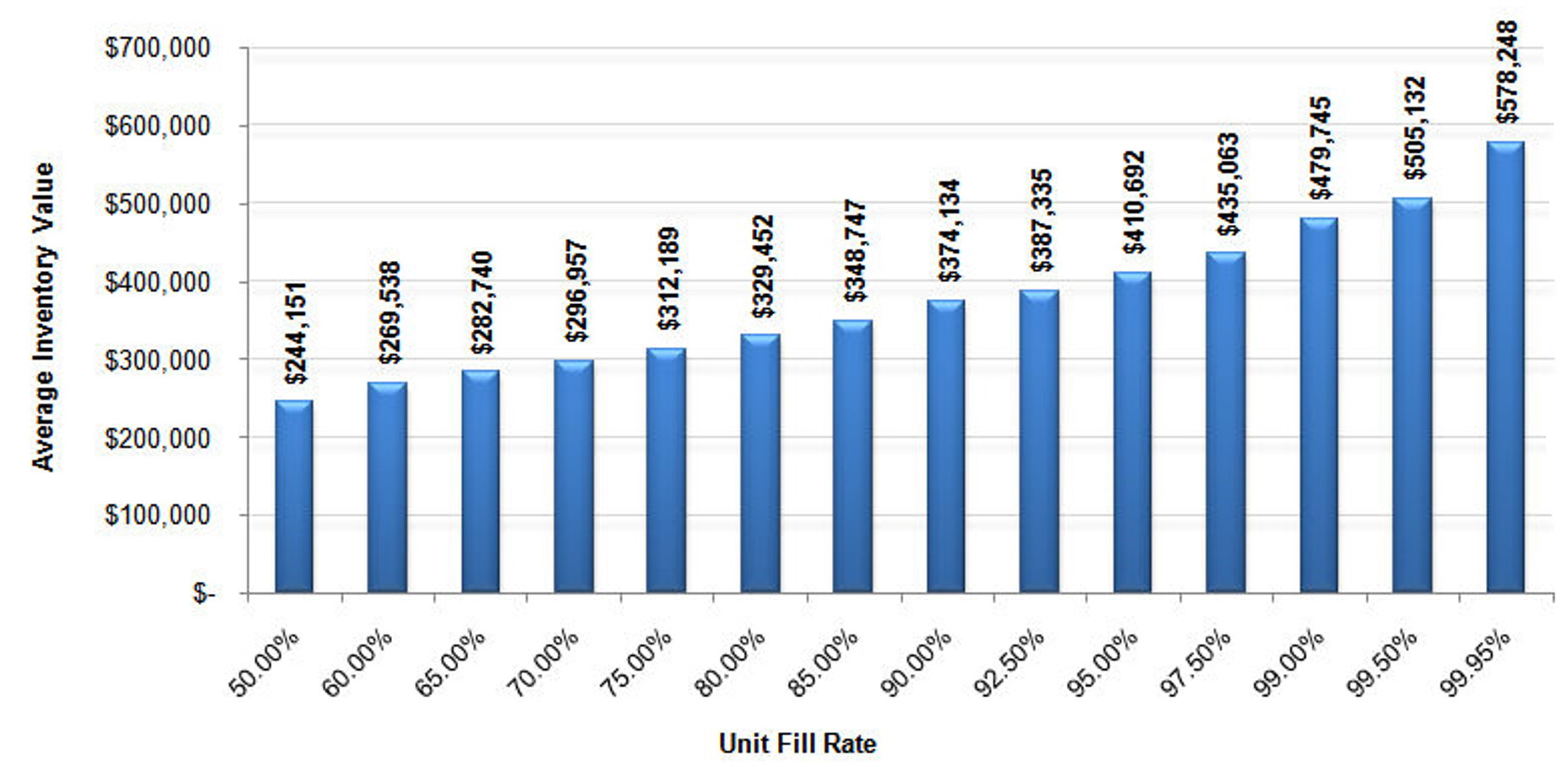Average Inventory Value
The average inventory value is computed as the average over time of the sum of the inventory values for individual items. The average inventory value (AIV) of an item at any particular time is the product of its average inventory level (AIL) and its unit inventory value (UIV). To gain a representative picture of the true average inventory value it is important to take snapshots of inventory values at random times throughout the course of a year to take into account seasonalities in inventory values.
An example average inventory value calculation for a major textiles company is illustrated below. The average is computed by taking the average of 13 end-of-period inventory values. Though better than quarterly figures, any end of period values may be somewhat misleading due to the fact that inventory levels tend to be lowest then.

Average Inventory Analysis
To improve cash flow, some companies are particularly concerned about their average inventory investment. The projected average inventory investment as a function of alternative customer service levels is illustrated in the figure. The illustration is derived from our RightChain™ Inventory. Tools like this can be used to assess the inventory investment required to protect a specified fill rate or to established a target fill rate associated with maximum acceptable inventory investment levels.
The average inventory value (AIV) for an item, i, should be estimated as the product of the average inventory level (AIL) in units and the unit inventory value (UIV). The unit inventory value is the investment in or cost of creating each unit of inventory at its current status (raw material , work in process, or finished goods). The unit inventory value is typically the selling price less the margin.
AIVi = AILi * UIVi

Inventory Optimization